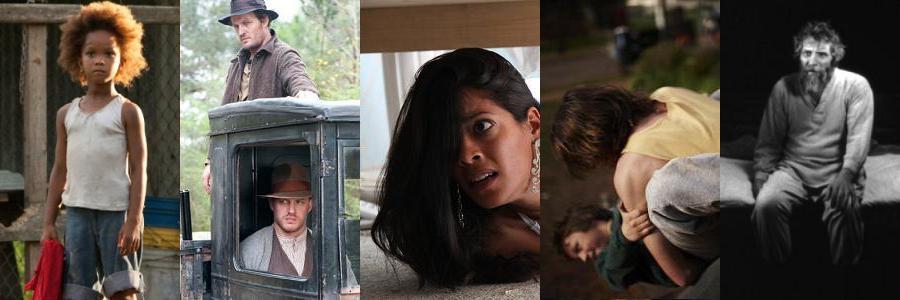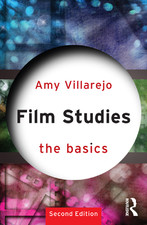The Fifties for 2012: Editing and Sound

Best Film Editing
Crockett Doob and Affonso Gonçalves for Beasts of the Southern Wild, for making Hushpuppy's world such a revolving, crystalline dream, but also allowing its mess, its detours, its slow patches and hesitations;
John Gilroy for The Bourne Legacy, for the precision cutting and rhythmic control over each scene, in the holding patterns and discourses as well as the chases and shoot-outs;
"Mary Ann Bernard" for Magic Mike, not just for squeezing the comedy, the drama, the musical, the sex show, and the essay into one film but for weaving them so subtly together;
Gerardo Naranjo for Miss Bala, for the impeccable construction of believably ground-level suspense, privileging Laura's POV but adding tension by nudging us just beyond it; and
Veronika Jenet for The Snowtown Murders, for clarity and economy, condensing complex sequences, slipping characters into and out of the film, dilating horror or paralysis as needed.
Honorable mentions in alphabetical order by film title to Joel Negron for 21 Jump Street, Andrew Hafitz for Damsels in Distress, Leslie Jones and Peter McNulty for The Master, Wolfgang Widerhofer for Michael, Andrew Weisblum for Moonrise Kingdom, and Olivier Bugge Coutté and Gisle Tveito for Oslo, August 31st.

Best Sound (Mixing and Editing)
Steve Boeddeker, Bob Edwards, John D. Matthews, et al., for Beasts of the Southern Wild, for keeping up with and blending the range of tones in Hushpuppy's life and in bayou life, working across exaggerated and realist registers;
Christopher Eakins, Robert Jackson, et al., for Lawless, for conjuring a sense of place as much through musical idioms as through foley work, giving the world depth and making the violence resonate;
Salvador Félix, Pablo Lach, et al., for Miss Bala, since every year yields its own champion for sheer ballistic impact, erupting through the quiets, excitements, and low-level dins of Mexico;
Frank Lipson, et al., for The Snowtown Murders, for again proving Australia a world champ in this craft, blurring lines between music and other elements, putting odd noises to indelible use; and
Gábor ifj. Erhélyi, et al., for The Turin Horse, for unforgettably synthesizing the constant wind, the quotidian noises, the rural and nocturnal quiets, and that warped-wood Mihály Vig score.
Honorable mentions aren't so numerous at this point in the year, but they start with Tim Barker, Gernot Fuhrmann, et al., who weave strands of memory, radio fragments, pub music, period textures, and wartime flashbacks so sinuously in The Deep Blue Sea. Craig Henighan, et al., gave Moonrise Kingdom some memorable sonic moments and motifs, and Ann Scibelli, Simon Hayes, Victor Ray Ennis, Mark P. Stoeckinger, et al., built a textured and evolving envelope of audio around Prometheus. Way off the grid of "Best Sound" types of movies, Jafar Panahi uses sound ingeniously to convey what he cannot or should not show in This Is Not a Film.
Labels: Fifties, Film Editing, Sound
 Nick's Flick Picks: The Blog
Nick's Flick Picks: The Blog
















